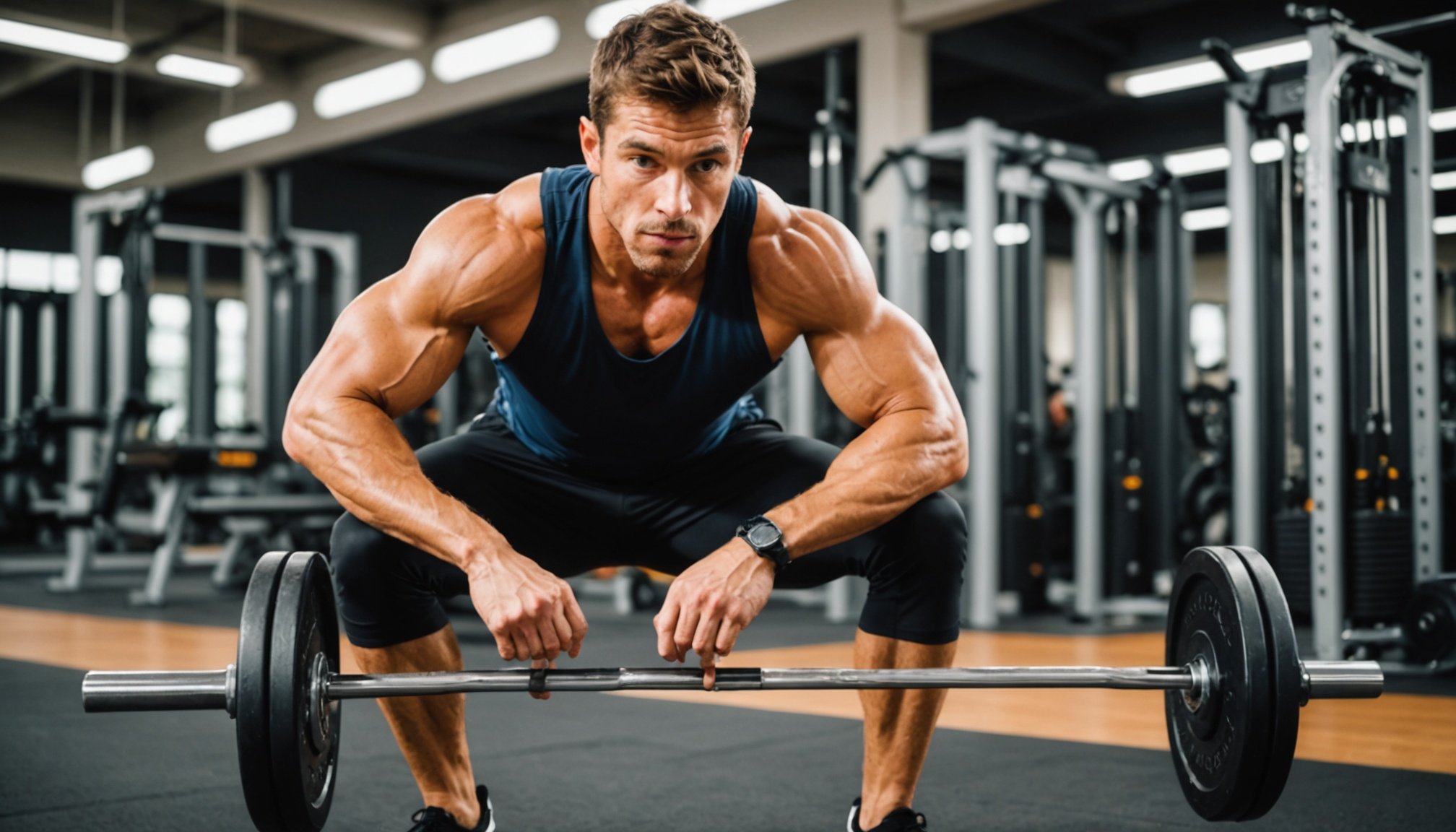As you strive to improve your exercise performance, there’s a myriad of factors you may need to consider — from the type of training you engage in to what you consume. Growing research is now underlining the significance of another crucial element: temperature. Heat is no longer a mere by-product of an intense training session, but rather an influential factor in the effects of exercise on the body.
In this article, we delve into the latest scientific findings on the impact of temperature variations in training environments on muscle adaptations. Our review includes comprehensive content from top research databases such as Google Scholar, Crossref, Physiol, PubMed, and Appl. We’ll discuss how training in hot conditions can help increase muscle performance and the role of post-exercise body temperature increase in muscle adaptation and recovery.
Also to discover : How can incorporating yoga improve your muscle recovery in bodybuilding?
Heat Training and Muscle Performance
Training under high thermal conditions is a practice gaining traction among athletes and fitness enthusiasts. The concept of heat training is rooted in the understanding that the body’s response to heat stress can trigger specific physiological adaptations, beneficial for exercise performance.
Recent studies indexed in Google Scholar and PubMed have demonstrated that heat acclimation can enhance muscle performance in several ways. For instance, heat training promotes an increase in plasma volume and blood flow to the muscles, facilitating better oxygen delivery and nutrient availability. This can significantly enhance muscle function and endurance.
Also read : Is it beneficial to mix cardio with strength training for muscle gain?
Further findings from Med and Crossref indicate that heat training can increase the body’s lactate threshold – the intensity level at which lactate begins to accumulate in the blood faster than it can be removed. This adaptation allows athletes to maintain high-intensity exercise for longer periods before experiencing muscle fatigue.
Physiological Effects of Post-Exercise Body Temperature Increase
The rise in body temperature post-exercise, often seen as a mere side-effect of a rigorous workout, is garnering attention for its role in muscle adaptation and recovery. A surge in body temperature can stimulate specific physiological responses that contribute to muscle growth and repair.
Research outlined on PubMed and Google Scholar shows that a post-exercise increase in body temperature can stimulate protein synthesis, a vital process for muscle adaptation and growth. This is largely attributed to heat shock proteins (HSPs), activated by the increase in temperature. HSPs act as chaperones for other proteins, ensuring their proper function, and thus enhancing muscle recovery and growth.
Moreover, Physiol and Appl have featured studies showing that a post-exercise rise in temperature can enhance the removal of metabolic waste products. The increased blood flow resulting from higher body temperatures facilitates the flushing out of lactic acid and other waste products, hastening recovery and reducing muscle soreness.
Temperature Variations and Muscle Adaptations
Contrasting the heat-centric training approach, recent research has also explored the effects of training in cooler temperatures. A fluctuating training environment can present unique challenges and benefits for muscle adaptations.
A study indexed in Crossref demonstrated that cold training could enhance the body’s ability to oxidize fat, which could potentially improve endurance performance. Additionally, exercising in cooler temperatures could stimulate the conversion of white fat to brown fat, which is more metabolically active and beneficial for weight control.
Meanwhile, research on Google Scholar and PubMed showed that training in variable temperatures could bolster the body’s thermoregulatory system. Regular exposure to different thermal conditions can enhance the body’s ability to regulate its temperature, which can be a crucial advantage in endurance sports.
Balancing Heat and Cold for Optimal Training
Striking the right balance between heat and cold training can offer a host of benefits for muscle performance and adaptations. However, the optimal approach may vary depending on individual fitness goals and physiological characteristics.
According to studies available on Appl and Physiol, incorporating elements of both heat and cold training can potentiate the benefits of each. For instance, heat training can optimize cardiovascular function and endurance, while cold training can enhance fat oxidation and metabolic efficiency.
Modulating temperature during various stages of training can also provide strategic benefits. For instance, heat training could be beneficial during the base phase of training when building endurance is the primary focus. In contrast, cold training could be strategically employed during the tapering phase to enhance fat oxidation and metabolic efficiency.
Amidst the increasing recognition of temperature’s role in training and muscle adaptations, it’s imperative to remember that individual responses can vary. Factors such as age, fitness level, and overall health status can influence how effectively one can adapt to different thermal conditions. Therefore, any changes to training regimes should be made cautiously, ideally under professional guidance.
The Role of Heat in Muscle Recovery and Regeneration
A post-exercise increase in body temperature is not just a by-product of an intense workout—it can also play a key role in muscle recovery and regeneration. The physiological responses associated with post-exercise heat can facilitate the healing and growth of muscle tissue.
One of the mechanisms behind this is the activation of heat shock proteins (HSPs) in the body. As studies outlined on Google Scholar and PubMed reveal, an increase in body temperature after exercise stimulates protein synthesis, a crucial process for muscle adaptation and growth. These HSPs function as chaperones for other proteins, maintaining their proper function and thus contributing to muscle recovery and growth.
Moreover, the increased body temperature post-exercise aids in the removal of metabolic waste products. Research featured on Physiol and Appl indicates that the elevated blood flow resulting from higher body temperatures helps flush out lactic acid and other waste products. This aids in hastening recovery and reducing muscle soreness after exercise.
Conclusion: Harnessing the Power of Temperature in Training
Temperature is not a mere environmental factor in exercise—it’s a powerful influencer in muscle adaptations. Whether training under extreme heat or braving the cold, athletes and fitness enthusiasts can leverage temperature variations to optimize muscle performance and recovery.
Heat training, as discussed, offers several benefits. It can enhance muscle function and endurance by increasing plasma volume and blood flow to the muscles. The increase in body’s lactate threshold allows athletes to maintain high-intensity exercise for prolonged periods before experiencing fatigue. At the same time, the post-exercise increase in body temperature can facilitate muscle recovery and growth.
On the other hand, training in cooler temperatures presents its own unique advantages. It can enhance the body’s ability to oxidize fat and stimulate the conversion of white fat to brown fat, aiding in weight control. Additionally, training in variable temperatures bolsters the body’s thermoregulatory system, a significant advantage in endurance sports.
However, it’s crucial to remember that the optimal approach to temperature-based training varies among individuals. Factors such as age, fitness level, and overall health status can influence the efficacy of heat or cold training. As such, any changes to training regimes should be made with caution, ideally under professional guidance.
The wealth of information available on Google Scholar, Crossref, Appl, Physiol, and PubMed provides valuable insights into the impact of temperature on training and muscle adaptations. As research continues to develop in this field, athletes and trainers can better harness the power of temperature to enhance performance and recovery.











